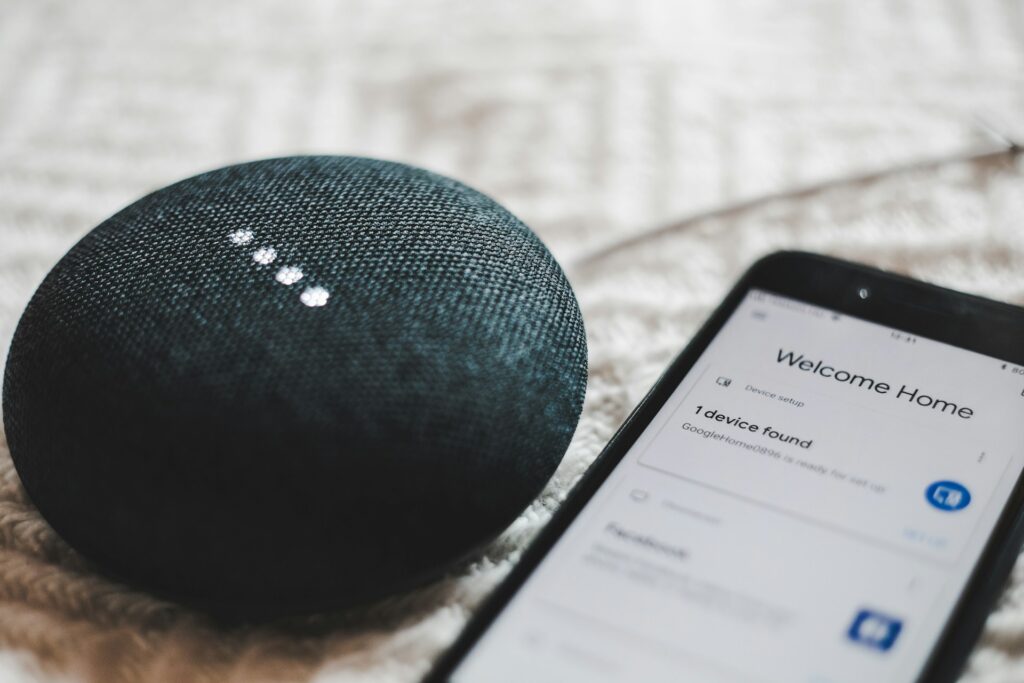Key Takeaways:
- Understanding the basics of smart home technology
- The benefits of integrating smart devices into everyday living
- Essential devices for a seamless smart home experience
- Privacy and security considerations
- Future trends in smart home technology
In an era where convenience is king, and energy efficiency reigns supreme, the allure of intelligent technology in residential spaces has surged more than ever. It’s not merely about the futuristic appeal; smart homes offer pragmatic solutions to everyday challenges, paving the way for a lifestyle that embodies the modern world’s sophistication and practicality.
Smart Home Technology 101
Smart home technology casts a wide net, covering any device or appliance that can connect, communicate, and interact via the internet. The basic idea is automating routine tasks, typically handled by humans, to create a more efficient and responsive living environment. Imagine waking up to the aroma of freshly brewed coffee, the curtains drawing back to reveal a sun-drenched room, and your favorite melody softly playing in the background—all without moving a muscle. These are just a few examples of the comfort and efficiency that smart home technology can bring. One such application of this sophisticated technology is in property upkeep, such as residential preventative stone maintenance Manhattan NY. This seamless integration of tech aids in preserving the integrity and durability of sophisticated materials used within urban dwelling spaces.
The Advantages of a Connected Home
The comfort we experience in our homes is magnified exponentially by integrating smart devices. Smart tech fosters a living space that can cater to personal preferences, adjust to external conditions, and proactively address the needs of its inhabitants. Beyond mere convenience, smart homes can contribute to significant energy savings, a feature that is quickly gaining importance as environmental concerns mount. Better management of resources also leads to cost savings, making smart tech integration a fiscally prudent move for forward-thinking homeowners. Most notably, the security enhancements—from motion sensors to surveillance cameras—are priceless for the peace of mind they provide.
The Must-Have Smart Devices
Smart homes are only complete with critical devices that serve as the building blocks of automation. A central component is the smart thermostat, which ensures an optimally heated or cooled environment ready for your arrival. Next are smart locks and security systems that deter unwanted intrusions and allow remote monitoring, regardless of location. Ambient lighting solutions and wireless sound systems work in tandem to create the perfect atmosphere for every occasion. These devices are luxurious additions and functional elements that enrich our daily lives.
Setup Tips for Smart Home Beginners
Kicking off your smart home adventure can be thrilling yet daunting. The first step is establishing a connected hub—think of it as the brain of your smart home ecosystem. This hub must be compatible with your existing devices and your chosen platform—whether it’s Android or iOS—to determine the fluidity of your experience. A reliable and secure Wi-Fi network is the backbone that brings your smart home to life, allowing seamless communication between devices. Starting with a few essential gadgets and gradually expanding your setup can help ease the transition into a fully automated home while keeping the process manageable and enjoyable.
Navigating Privacy and Security in Smart Homes
As exciting as the world of smart homes sounds, it does come with caveats regarding digital privacy and data security. Every device connected to the internet is potentially vulnerable to breaches. Therefore, taking proactive steps to secure your network, such as using robust encryption and setting up firewalls, is non-negotiable. Periodically updating device firmware and maintaining unique passwords for different gadgets can go a long way in safeguarding your smart ecosystem against the prying eyes of cyber adversaries.
Cost-Benefit Analysis of Smart Home Investments
While integrating smart home technology involves some investment upfront, the long-term benefits can be substantial. To understand such technology’s real-world impact and prospective advantages, consideration of life-quality improvements is imperative, as highlighted in an insightful New York Times article. The initial investment can be calibrated according to individual needs; scaling up can be strategized to align with lifestyle changes and priorities, leading to an optimized cost-to-benefit outcome.
The Horizon: Emerging Trends in Home Automation
The trajectory of smart home innovation is steeped in constant flux, with novel trends surfacing at a vertiginous pace. The future beckons a new breed of intelligent homes equipped with technologies that respond to commands and anticipate needs—proactive rather than reactive. As detailed in a comprehensive Forbes report, advancements such as AI and machine learning are set to redefine the very notion of convenience in domestic settings. This paradigm shift towards predictive automation signifies a leap towards an era where home is not just a place you live but an entity that lives to serve you.

